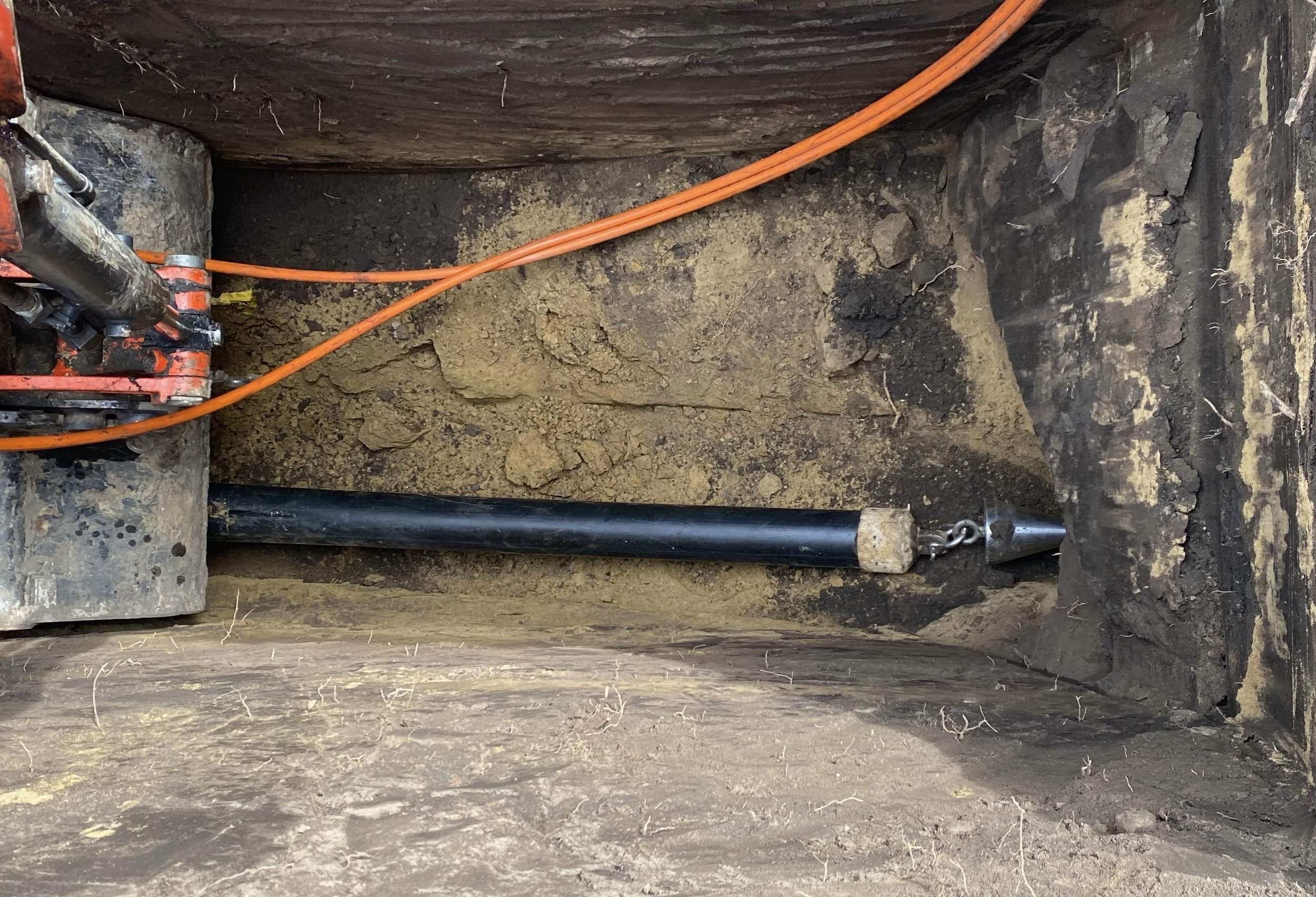Trenchless Pipebursting.
There are times where standard excavation to repair and replace sewer and waterlines do not make sense. This is where Trenchless Pipebursting comes in. Pipebursting allows piping to be replaced over a long section, with only 2 access holes required. It creates less mess and can save you lots of money by eliminating the costly restoration cost for roads, curb, sidewalk or driveways.
Process
Trenchless Pipebursting replacement refers to the process of replacing a damaged or deteriorating sewer service line without the need for extensive excavation. This method is preferred in situations where traditional excavation methods are not practical or cost-effective. Trenchless techniques offer minimal disruption to landscapes, driveways, sidewalks, and other structures by pulling a new sewer between two access holes using the existing sewer as a guide. A hydraulic ram pulls with up to 30 tons of force, pulling a braided steel cable attached to an oversized bursting head. This head creates a path for the new pipe and pulls it in behind it.
Timeline
Most Trenchless pipebursting repairs are completed within 1 day.
FAQs
-
Pipebursting is a trenchless method used to replace old or damaged pipes without the need for extensive excavation. Here's how it works:
Access Points | The process begins by creating two small access points, typically one at the beginning of the pipe and one at the end. These access points serve as entry and exit points for the new pipe.
Bursting Head Insertion | A specialized tool called a bursting head is attached to a cable or hydraulic system. The bursting head is larger in diameter than the old pipe and has cutting blades or other mechanisms at the front.
Guided Process | The bursting head is inserted into the old pipe from the entry point. As it progresses through the pipe, it breaks apart the old pipe using its cutting blades. At the same time, it pulls a new pipe of the desired material behind it, such as HDPE (high-density polyethylene) or PVC (polyvinyl chloride). The new pipe is of the same or larger diameter than the old pipe.
Simultaneous Replacement | The bursting head fractures the old pipe and pushes the fragments into the surrounding soil. At the same time, the new pipe is pulled into place, essentially replacing the old pipe with the new one.
Completion and Connections | Once the bursting process is completed, the access points are used to make necessary connections to the existing sewer or water system. The connections are sealed, and the new pipe is tested to ensure it is properly installed and functional.
Pipe bursting is advantageous because it avoids the need for open trenches, reducing the disruption to the surrounding area. It is commonly used to replace deteriorating or damaged pipes, especially in urban areas where excavation might be difficult or costly. Additionally, it allows for the installation of larger-diameter pipes, improving the overall capacity and efficiency of the drainage system.
-
Pipebursting is used in circumstance where A No-Dig Sewer Liner will not work. Liners require that the piping be no more then 20% misaligned and be full size diameter. If the piping is not aligned or is crushed, a No-Dig Sewer Liner will not work. Pipebursting allows for sewer lines to be repaired with less mess and destruction.
Done right the first time.
Would you like to know more or request a quote for a project?

